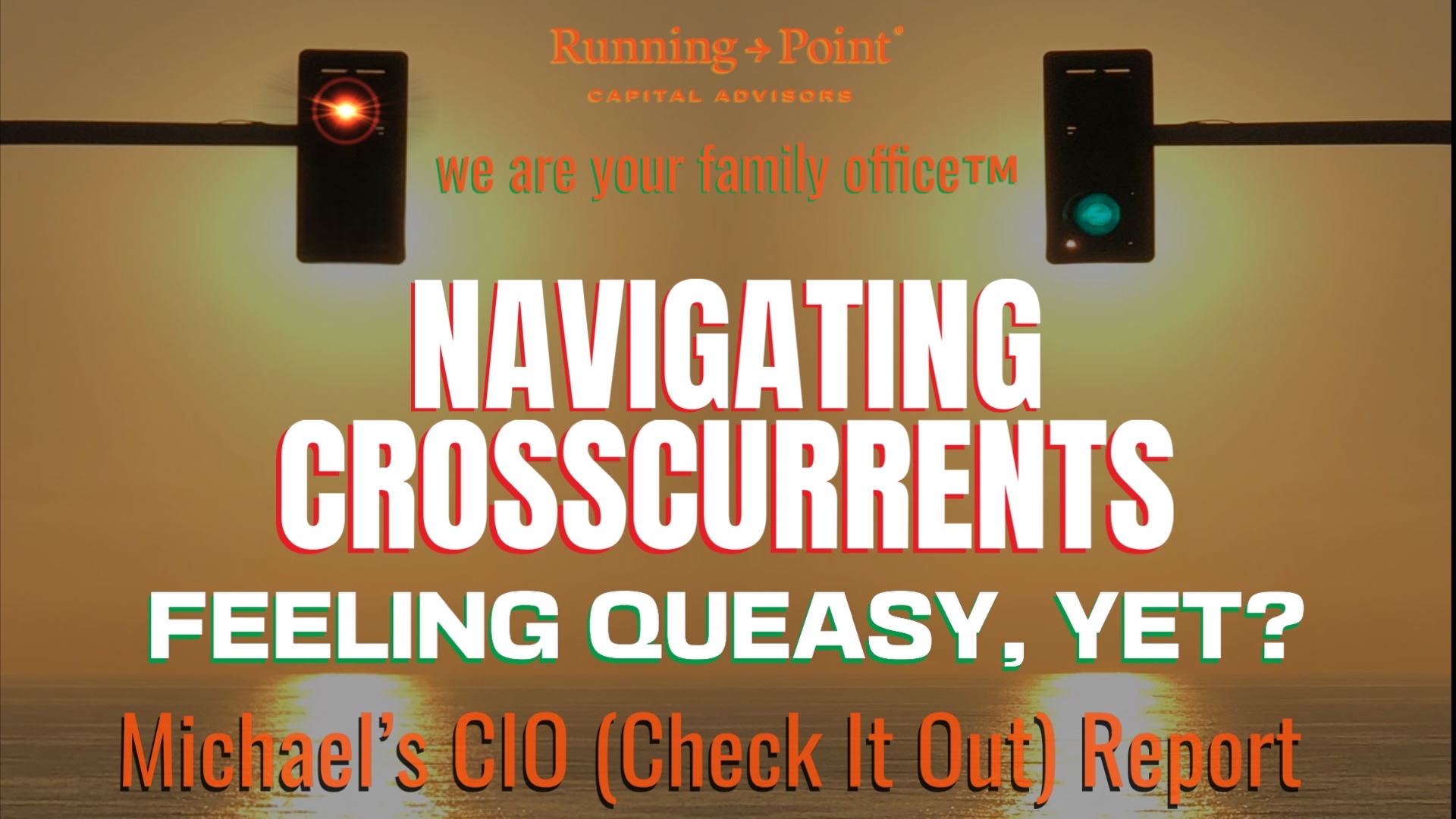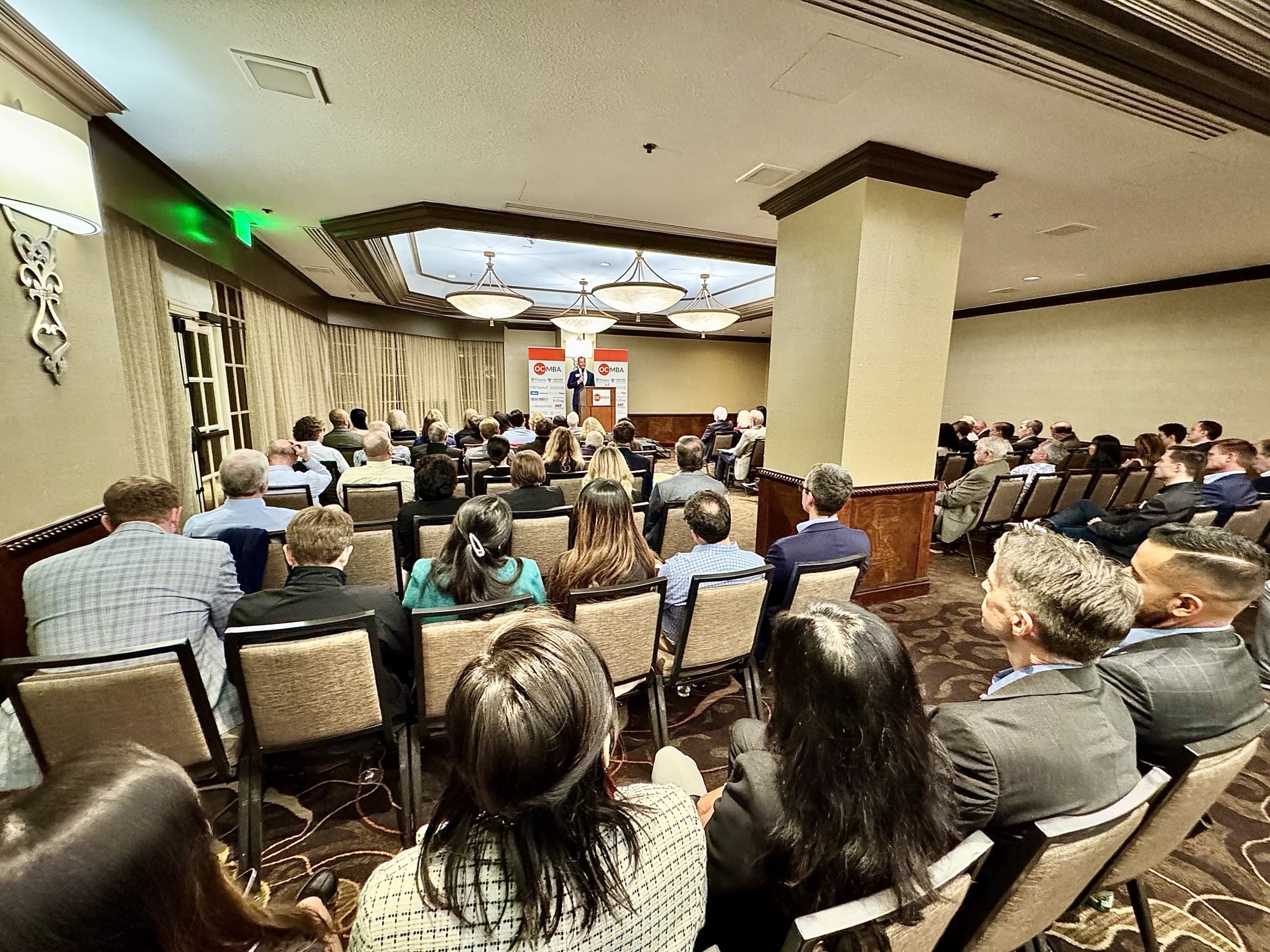- U.S. business spending has recovered from the shock of pandemic shutdowns
- U.S. consumers have more savings, higher incomes, and more pent-up demand than a year ago
- As stated in our December Insight, the vaccination itself would be the largest stimulus
- But not to be outdone, $1.9 trillion of new U.S. fiscal stimulus will compete for that title along with President Biden’s proposed $3 trillion infrastructure and domestic-needs bill
- The Federal Reserve has committed to full U.S. employment, which probably means an easy monetary policy for the next couple of years
- Global growth is recovering on the back of government largesse and vaccination rollouts around the world
- This environment will probably remain solid for opportunities in the illiquid or private investment areas of real estate, venture capital, and private credit
- Although a Roaring ’20s theme remains in play, and is our most likely scenario, possible temporary party crashers include inflation and fear of inflation from overstimulation of the economy, along with a host of other risks mentioned below
Many numbers are dull, hence the fact that “numb” is the root of the word number;[ii] nonetheless, we believe the U.S. and the world have some exciting figures to report; maybe too exciting. Overall, strong corporate, digital services, and technology spending have offset the bust in pandemic-exposed categories. Revenues in much of the economy have risen above pre-pandemic levels, and in many cases returned to their pre-pandemic growth path. Even energy-related spending is on an upswing as higher oil prices sustain greater capital expenditures. Economic damage from the pandemic remains most localized in travel, tourism, live events, in-store retail, bars, restaurants, and other ancillary sectors. Hiring intentions and revenue expectations are higher across pharmaceutical, healthcare, technology, industrial, business services, recruitment, and outsourcing. A massive additional employment switch will flip on once travel and leisure resume.
One year into the pandemic crisis, total government defensive and offensive stimulus is three to four times greater than it was during the first five years of the great financial crisis that began in 2008. The coordinated monetary and fiscal response to date has been unprecedented—equal to over 40% of gross domestic product (U.S. economic output).Positive2021 U.S. economic growth trends will be further fueled by:
- The American Rescue Plan Act, a $1.9 trillion package of COVID relief that includes checks to 159 million households (up to $1,400 per person, plus $1,400 per child and adult dependent), supplemental unemployment benefits of $300 per week, and aid to states, municipalities, hospitals, and schools
- President Biden’s proposed $3 trillion infrastructure, clean energy, education, and domestic needs plan
- The rapid pace of vaccinations that will fast-track the economy’s reopening
- Global growth recovery that improves revenues for U.S. multinational companies
While most domestic relief checks will be spent on rent and necessities, some will feed into savings and discretionary spending. U.S. household consumption may grow at a 4% annual rate, helped by rising income levels, at-home expenditures, the reopening of bars and restaurants, and the ongoing boom in durable goods (appliances, tools, computers, electronics, jewelry, cars and trucks, and furniture) spending. The setup looks enticing for A) U.S. equities to perform well as U.S. vaccinations lead much of the developed world out of the COVID crisis; B) Emerging markets to improve on the heels of global and commodity growth; and C) Municipal bonds[iii] to maintain desirability with federal support and higher tax rates. U.S. economic growth could be above 6% by year-end, tapering to half that in 2022, and a more normal 2% in 2023.
From a market perspective, there is concern that government largesse may overstimulate the U.S. economy—too much of a good thing—some investors have stopped worrying about inadequate growth and begun to fret instead about the prospect of overheating, inflation, or other concerns: higher yields, COVID-19 variants, Chinese national reunification with Taiwan, millions of delinquent mortgage and rent payments, inefficient pricing of risk, and higher taxes. Investors usually look ahead—as in a chess game—but everyone does so differently; analysts may try to predict one, two, three, or four iterations forward, and each forecaster will look at various dissimilar factors from a multitude of perspectives. This type of predictive analysis has fueled fears of inflation, rising interest rates, and more expensive capital, all of which can cause a re-evaluation of asset allocations and prices.
What could go wrong with too much of a good thing? Call it indigestion or anything and everything. The Fed may need to negotiate a difficult policy shift without cratering the equity market as well as business and consumer confidence. Then there is the virus; will the variants outwit the vaccines and their eventual booster shots? How quickly will people and governments resume their extroverted lives? What are the inevitable fiscal policy twists and turns to come? Additionally, the great decoupling (as put forth by Nigel Inkster and Enodo Economics) between the U.S. and China begun during the Trump era looks set to continue under Biden with sustained trade disagreements, technology rifts, and headline-making disputes over Taiwan[iv]. Other unknowns are how millions of delinquent mortgage and rent payments will clear through the system (either through forgiveness, continued moratoriums, payoff/installment plans, or household transitions), how investors will react to higher local and federal taxes, and whether risk is inefficiently priced—in other words, are asset prices too high? There are always things to worry about; we tend to be most concerned when the majority is jubilant, not when they are fretting. The triggers that upset things are usually surprises—by definition—like a giant cargo ship blocking the Suez Canal and 12% of global shipping[v]. Expect some unsettling asset price and headline volatility as investors make sense of this new world of massive stimulus and debt.
We do not believe that higher interest rates will derail current economic or asset growth. Overall, rising yields portend a better economy, stronger nominal growth, and a recovery boom in the second half of 2021. Although 10-year and 30-year Treasury interest rates have risen sharply over the last few months, they remain historically low and do not seem nearly high enough to choke off growth. More importantly, growth historically collapses when lenders stop lending, not when rates are high[vi]. Additionally, if the backup in yields is only at the long end of the curve (as it is now), borrowers can obtain credit off the lower short-end of the yield curve in the form of floating-rate or revolving loans, and thereby keep borrowing costs down. Federal Reserve Chairman Jerome Powell claims that short-term rates will not rise till at least 2024[vii]. If this remains the case, equities should continue to do well with a recovery boom that soaks up extra output capacity. The asset price boom should continue until investors anticipate that the Fed will shift policy.
Inflation remains low, at a +1.8% annual rate, but inflation expectations have climbed. Real inflation may rise because of continued easy Fed policy, minimum wage increases, additional hiring of mid-wage workers, elevated energy cost comparisons (recall that last year, oil crashed below $30 and now hovers around a more normal $60, a 2x increase), temporary supply shortages, sticky restaurant price increases, and a perceived willingness among consumers to spend whatever it takes to satiate pent-up demand for vacations, concerts, hotels, restaurants, bars, air travel, cruises, and group experiences. With year-over-year price comparisons depressed due to lockdowns, there are almost certainly going to be enough price scares in the months ahead to confirm the biases of investors nervously looking for signs of inflation. Additionally, there are pockets of price pressure: Lumber prices have tripled since the April lockdowns due to a boom in residential construction; shipping rates have risen sharply with a strong trade rebound; and a shortage in computer chips has affected electronic component prices. Comparable price spikes are likely in passenger air travel later this year, as the 50% reduction in seating capacity (flights out of service) interacts with a sharp, post-vaccine rebound in air travel. Nonetheless, although people psychologically like to draw straight-line trajectories (believing what goes up will continue to rise), inflation usually levels off and over the long term will be tempered by higher labor and technology productivity, and expanded output[viii].
This volatile environment has been ripe for opportunities in the illiquid or alternative areas of real estate, venture capital, and private credit. Real estate outside of malls and urban centers has performed well, especially on the back of strong residential demand and low interest rates. Both early- and late-stage venture capital company valuations in the U.S. reached new heights in late 2020; record dry powder (cash), nontraditional investors, a flight to quality, and a stock market rally created a strong end to a volatile year. “The median late-stage [valuation] figure hit $120 million in Q4, surpassing $100 million for the first time, and the early stage continued its steady growth to set a record quarterly median of $35 million,” according to PitchBook; “The median public listing size climbed above $510 million, a 39% increase year-over-year and part of a surprisingly successful exit market on the heels of 2019’s all-time record.” Private credit has also had much to cheer; the pandemic increased the need for and costs of credit, while massive government stimulus and buoyant asset prices restrained risks. We believe we will continue to see enticing opportunities in the illiquid (private deal) space and endeavor to present those when appropriate.
European growth continues to be dented by COVID-19 related restrictions and curfews, but February data was much improved relative to January. Retail sales foot traffic improved by +15%, and even more transactions have shifted online, with e-commerce effectively doubling in many categories. European GDP may exceed analyst expectations thanks to faster-than-expected growth in industrial and business orders. Demand for European electronics and related inputs has risen steadily, and recent growth in export orders could persist for some time as inventories restock and strong growth in Asia persists. Nonetheless, Europe will probably bounce back more slowly than the U.S. and Asia.
Japan and China are up strong on the backs of renewed global growth and domestic stimulus. Data from China is strong—with a huge (+36%) increase in retail foot traffic and doubling logistics volumes—and consistent with +6% sequential growth in real GDP. China’s growth will also tie into its economic, social, and national security—see the “great decoupling” mentioned above. This probably means fiscal deleveraging, emphasis on technological innovation (note China’s lead in 5G[ix]), and a coordinated research & development push to sharpen global competitiveness and increase self-sufficiency across manufacturing, energy, and food production. Industrial orders in Japan increased by +5.5% on a sequential basis in February, reinforcing optimism about the sustainability of growth in 2021 now that the initial snapback in activity is over. Other emerging markets, aside from China, should benefit from global reacceleration as well as rising commodity prices since they tend to be net exporters of natural resources.
Our 2021 economic outlook is positive, owing to vaccine distribution, highly supportive monetary policy, more COVID-19 relief, and the Biden administration’s supportive fiscal policy. Within corporate America, expect a decline in defaults, a reinvigoration of competitiveness as companies like Frontier Communications and Hertz emerge from bankruptcy with cleaner balance sheets, and a giant turbo boost when the switch is flipped back on for travel and leisure—hotels, airlines, and travel providers will need to re-employ en masse. While this is a welcome environment, some assets may be priced for perfection, leaving little room for recovery disappointment, and too much of a good thing may lead to inflation and rising interest rate fears that could dampen the party. Nonetheless, short of war or a more virulent virus, both the global and domestic economies should expand smartly.
Running Point strives to maintain diversified portfolios that balance perceived outlooks with risks while we search for and analyze opportunistic investments. For some with a longer-term view that can take advantage of some illiquidity, private credit funds, specific real estate deals, venture capital, or other bespoke deals may offer unique prospects to achieve goals efficiently and effectively.
Michael Ashley Schulman, CFA
Partner, Chief Investment Officer
[i] Many have used the title phrase “Too much of a good thing…” much better than I ever could:
- “Why not invest your assets in the companies you really like? As Mae West ‘Too much of a good thing can be wonderful’.” ~~Warren Buffett
- “Too much of a good thing is just about right.” ~~Jerry Garcia
- “Too much of anything is bad, but too much Champagne is just right.” ~~F. Scott Fitzgerald
- “Why then, can one desire too much of a good thing?” ~~Rosalind in William Shakespeare’s romantic comedy, As You Like It (4.1.112-115)
[ii] Please do not tell either my French or Latin teachers I wrote this. The true etymology of the word “number” traces back to circa 1300, meaning “sum, aggregate of a collection,” from Anglo-French noumbre, Old French nombre, and directly from Latin numerus: “a number, quantity,” from Proto-Indo-European root *nem- “assign, allot; take.” https://www.etymonline.com/word/number
[iii] Muni bonds performed better than many investors anticipated in 2020 as state revenues came in better than many feared; e.g., California revenues were $10B higher than even internal state projections.
[iv] National reunification is a matter of pride for China, righting the perceived wrongs inflicted by 19th-century Western imperialists. Reunification commands majority support among mainland Chinese people. As President Xi Jinping understands—and hopefully other countries recognize—the Chinese leader who achieves reunification places himself beyond challenge or criticism, whatever his deficiencies in other areas. A direct military assault on Taiwan would present major challenges, but a reunification through a gray or murky campaign of intense pressure on Taipei could borrow from China’s Hong Kong playbook. Time is on Beijing’s side since the People’s Liberation Army (and navy) only grows stronger. This gray campaign probably means higher levels of military activity and opportunism within Taiwan’s sphere. It is rarely wise to assume that an adversary will not do something just because we judge it undesirable.
[v] On Tuesday, March 23, 2021, the MV Ever Given—one of the largest container ships in the world—a Japanese-owned 220,000-ton megaship a quarter of a mile long operated by Taiwan’s Evergreen Marine ran aground sideways in the Suez Canal and got stuck (technical term), causing a huge jam of vessels on both sides of this vital international trade route responsible for 12.3% of global shipping. The Ever Given is one of a new category of ships called ultra-large container ships (ULCS).
[vi] I would rather have interest rates at 9% and creditors lending, than interest rates at 2% and creditors not lending. Without credit, economic expansion is exceedingly difficult.
[vii] Nonetheless, a sooner rate rise is always possible—in other words, if the economy runs too hot, the Fed will need to recalibrate policy.
[viii] Demographics within the U.S., as birthrates decline and more people age, is often seen as one of the main factors that will keep a lid on U.S. inflation. Older established households tend to buy less than younger folks. However, demographics may not provide as strong an inflation cap if liberalization of immigration policies allows a younger demographic into the U.S.—people who eventually will be consumers of apartments, homes, and all the furnishings and appliances that go with new-household creation.
[ix] Over the last three decades, development of the American consumer internet has allowed global investors to see the evolutionary path of technology in their own ecosystems. But with China ahead of the U.S. in 5G deployment, facial recognition, and digital payments, there is a strong case to consider China’s consumer internet as the new crystal ball. China’s prospective 5G leadership will create future use cases and set standards that guide 5G’s global development, especially in emerging markets. In other words, the next Amazon, Facebook, or Uber that everyone imitates may come out of the People’s Republic rather than the United States.
Disclosure: The opinions expressed are those of Running Point Capital Advisors, LLC (Running Point) and are subject to change without notice. The opinions referenced are as of the date of publication, may be modified due to changes in the market or economic conditions, and may not necessarily come to pass. Forward looking statements cannot be guaranteed. Running Point is an investment adviser registered with the U.S. Securities and Exchange Commission. Registration does not imply a certain level of skill or training. More information about Running Point’s investment advisory services and fees can be found in its Form ADV Part 2, which is available upon request. RP-21-09


